Session 2
| Site: | MoodleHUB.ca 🍁 |
| Course: | Early Learning and Child Care 30 Modules |
| Book: | Session 2 |
| Printed by: | Guest user |
| Date: | Thursday, 18 December 2025, 10:32 AM |
Description
Created by IMSreader
1. Session 2
Session 2: Health, Safety, and Well-Being of Children
Introduction
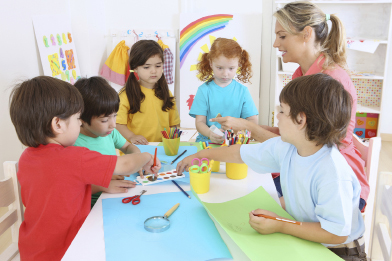
© Ekaterina Monakhova/iStockphoto
In this session you will examine some of the components of child care regulations and the role of the child care licensing officer/child care specialist. You will also learn about ways to promote the health, safety, and supervision of children.
1.1. Get Focused
Session 2: Health, Safety, and Well-Being of Children
Getting Focused Activity: Have You Ever Wondered?
Have you ever wondered what rules or guidelines ensure quality care for every child in child care centres in Alberta?
What policies should you follow to ensure the health and safety of the children in your care?
If a family moves, will the child find similar standards of care in another child care centre?
What do licensing officers and child care specialists look for when they visit your child care facility?
Directions
Complete Getting Focused Activity: Have You Ever Wondered?
1.2. Inquiry 1
Session 2: Health, Safety, and Well-Being of Children
Inquiry 1: Health, Safety, and Well-Being of Children
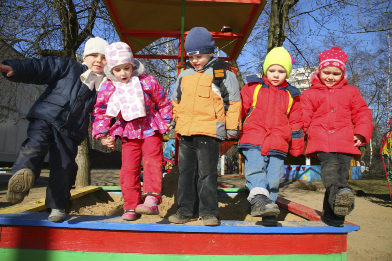
© Paha_L/iStockphoto
Did you know?
- There are rules or guidelines and standards to ensure that every child in Alberta has access to quality care.
- There are regulation and licensing policies that must be followed to ensure the health, safety, and development of children.
- If a family moves, their child will find similar standards of care in another child care centre.
- Licensing officers/child care specialists are responsible for licensing and monitoring child care programs.
The Purpose of the Child Care Licensing Act
Child Care Licensing Regulation: the legislation stating the minimum standards required for a child care centre to receive a licence and provide care for children
licence: a document indicating that the standards, as outlined in the Child Care Licensing Regulation, have been met by a child care centre
The licence must be posted in the child care centre.
Who Is Affected by the Child Care Licensing Act?
By law, any facility providing care for seven or more children in the province of Alberta must obtain a licence to operate. Exceptions include educational programs, day camps, and recreational facilities or any other commercial facility where the parents remain on the premises and are readily available. The Child Care Licensing Act and Child Care Licensing Regulation set out specific standards of care for children attending child care centres, preschools, and out-of-school care centres (for children attending grades 1 to 6).
What Is a Child Care Licence?
A licence is an official document that indicates a child care centre has met the minimum standards to provide care for children as outlined in the Child Care Licensing Act and states the maximum number of children allowed to be in care. A licence is issued for a maximum of one year at a time. The licence must be posted in a visible and prominent place in the child care centre. All caregivers should read the licence and be aware of any conditions.
What Are the Child Care Licensing Act and Regulation?
It is the legislation that indicates what facilities require a licence, what kind of licence is issued, how to obtain a licence, and what enforcement actions can be taken.
What Are the Minimum Requirements?
These are the basic requirements that a child care centre must meet to protect children’s health and safety, and ensure their developmental needs are met. The standards address such things as staff-to-child ratios, health and safety practices, and the practices used to guide children’s behaviour.
A copy of the Child Care Licensing Act and Regulation is available through the Queen’s Printer bookstores in Edmonton and Calgary. This document should be on site in each child care centre. Copies are also available on the Alberta Children and Youth Services website.
It is the job of licensing staff to inspect child care programs on a regular basis to ensure that each program is meeting its legislated requirements.
Child Care Accreditation
accreditation: a voluntary process by which child care programs demonstrate that they meet standards of excellence in child care
This process is designed to help families select the best available care for their children.
As of September 2004, the Government of Alberta has approved an accreditation program where centres are recognized and supported for exceeding current licensing requirements and providing excellence in care based on the accreditation standards. Parents can choose accredited centres knowing they will provide the best available care.
The accreditation process is voluntary, so not all centres may choose to participate. You will have to contact the program director to determine if the centre is accredited or has applied for accreditation. Provincial grants are available to accredited child care centres and include a component for enhanced staff wages.
Types of Licensed Programs
Day Care Program
A day care program provides care to infants, preschool children, and kindergarten children for four or more consecutive hours each day.
Group Family Child Care
This program provides care to infants, preschool children, kindergarten children, and school-aged children in the private residence of the licence holder. The program must not provide child care for more than 10 children, including the licence holder’s own children and not more than three children may be under three years of age and not more than two children may be infants. Overnight child care is not permitted.
Out-of-School Care
This program is provided to kindergarten children and school-aged children in any or all of the following periods:
- before and after school
- during the lunch hour
- when schools are closed
Preschool
This program is provided for preschool children and kindergarten children for less than four hours per child in each day the program is provided.
Innovative Child Care
This program, approved by the director, is designed to meet the unique child care needs of the community where the program is provided, such as overnight care in a 24-hour work place setting (e.g., hospitals, factories).
Family Day Home Agency
This organization oversees and monitors approved family day homes to ensure that the health, safety, and developmental needs of children are being met.
The Child Care Licensing Regulation
The Child Care Licensing Regulation is concerned with the following four key areas:
- Application process. This section provides the regulations regarding who can obtain a licence and how to apply for a licence.
- Child care programs. This section provides the regulations regarding the physical setting (space, furnishings, and equipment), the program, child guidance, and the practices that ensure the health and safety of children.
- Child care certification. This section provides the regulations for staffing, including the qualifications of caregivers and director, staff-child ratios, and the supervision requirements for children at all times. These are considered critical standards.
- Administrative matters. This section provides forms for applying for a Child Care Licence and Notice of Appeal to an Appeal Panel.
Read “What Does the Child Care Licensing Regulation Say?”
Role of the Licensing Officer
The licensing officer/child care specialist is a person with expertise in child development and child care, who is responsible for ensuring that child care standards are being followed and providing consultative advice on quality child care practices. Among her or his responsibilities are the following:
- Recommending new licences. When a centre is ready to open, or an existing centre moves, licensing officers work with the licence holder to ensure the centre meets the Child Care Licensing Regulation requirements before the program opens.
- Monitoring facility standards. Licensing officers inspect child care centres on a regular basis to see whether they meet the legislated standards. If the centre does not meet the standards, the licensing officer will inform the director or owner and follow up to ensure that any violations have been cleared up.
- Investigating complaints. A large part of the licensing officer’s job is responding to concerns and complaints from the community, parents, and staff. All complaints relating to the Child Care Regulation are investigated by licensing officers.
- Liaising with other government departments. In addition to meeting the Child Care Licensing Regulation, child care centres must also meet public health and fire safety standards. When licensing officers observe that a centre is not meeting these requirements, they will refer their concern to the appropriate authority for follow up. Licensing officers also liaise with building, zoning, and other authorities.
Licensing officers ensure the child program meets all regulated requirements, which include, in part:
- developmentally appropriate programs
- size-appropriate and safe furnishings
- adequate supervision
- proper staff-to-child ratios
- proper staff qualifications
- appropriate staff interactions
- appropriate child guidance and management techniques
- appropriate and safe outdoor areas
- cleanliness of facility
- condition of the floors and rooms
- appropriate management of broken toys, ripped books
- child-directed activities
- play centres opened during circle time
- awake activities for children who do not sleep
- interaction that is warm, with talking, singing, laughing, and praising
- welcoming of children and parents by name
- knowledge of children’s interests
- appropriate responses that comfort children and meet their needs
All of these checks by the licensing officer are vitally important to make sure that child care centres are safe and healthy places for children.
Licensing officers also provide information, offer workshops, and attend staff meetings to address questions from parents, the general public, and child centre staff. Discussions are often about quality and age-appropriate child care practices. Officers also help people who wish to obtain a licence.
Officers are pleased to respond to your questions, so don’t hesitate to contact them. If you are not certain about the meaning of a particular regulation or are unsure if what you and other staff are doing is within the regulations, it is very important to consult an officer. Contact your regional Child and Family Services Authority office for a direct contact number or address.
1.3. Learning Activity 1
Session 2: Health, Safety, and Well-Being of Children
Learning Activity 1: How to Use the Child Care Licensing Regulation
Focus
There are five critical standards of the Child Care Licensing Regulation:
- maintaining staff-to-child ratios
- maintaining staff qualification requirements
- providing adequate supervision
- meeting children’s developmental needs
- using appropriate child guidance practices
The regulations set out the standards in each of these areas. This activity will help you become familiar with the legislation as you go through to find the answers.
Directions
For each of the questions, use the following steps to find the necessary information:
Step 1: Go to the Alberta Queen’s Printer website. Click on the “Laws Online/Catalog” tab. In the search box “Search by title,” type “child care” and then click “search.” Two links will appear: Child Care Licensing Act and Child Care Licensing Regulation. You can access this legislation at no cost by downloading the PDF versions of the legislation. You will need these two pieces of legislation to complete the following activity.
Step 2: Complete the interactive Child Care Licensing Act and Regulation activity.
1.4. Inquiry 2
Session 2: Health, Safety, and Well-Being of Children
Inquiry 2: Health and Safety Practices in Child Care Centres
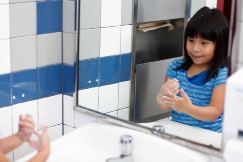
© Fernando Delvalle/shutterstock
Sound health and safety practices are critical in child care centres. The Child Care Licensing Regulation addresses some of these practices. In addition, child care centres must follow requirements established by the Alberta Fire Code and the Public Health Act. Health and fire inspectors visit centres to ensure their respective requirements are met.
Children in group care settings are prone to being exposed to various diseases and illness. However, the spread of infectious disease can be kept to a minimum. To do this, caregivers must follow sound health practices. Many of these practices are addressed in the resources for this session.
Everyone benefits from a healthy environment.
- Healthy kids are happy kids!
- Family members have to find alternative care less often.
- Family members are healthier.
- Caregivers are healthy and miss less work, meaning more consistency for the children.
Understanding about infectious (communicable) diseases will help you prevent their spread.
Immunization

© David Davis/shutterstock
When you get sick, your body makes antibodies to fight the disease and help you get better. These antibodies stay in your body, even after the disease has gone, and protect you from getting the same illness again. This is called immunity.
Babies are immune to many diseases because they have antibodies from their mothers. Unfortunately, this immunity does not last and wears off during the first year of life. Fortunately, there is something people can do to keep their children immune. The children can be vaccinated.
Vaccines trick your body so that it thinks it is being attacked by a disease. Your body’s response is to produce antibodies that remain in your body. If a child is exposed to the actual disease, she or he will be protected.
Other names for immunization are
- needles
- baby shots
- vaccines
- vaccinations
A vaccine is a weak or “dead” version of the viruses or bacteria that cause disease. Some of these vaccines can be given to children as needles and others as drops to be swallowed.
When children are immunized, they are protected from
- blood infections
- ear infections
- diphtheria
- influenza
- haemophilus influenzae type b
- hepatitis A and B
- measles (red measles)
- meningitis
- mumps
- tetanus (lockjaw)
- pertussis (whooping cough)
- pneumonia
- polio
- rubella
- varicella (chicken pox)
When children don’t have their shots and come in contact with someone who has measles, whooping cough, or other childhood diseases, they will probably get sick. In some cases, they may become gravely ill. When children are immunized, their bodies have the best chance to fight off these diseases and recover from the illness.
Immunization for Child Care Workers

© Istvan Csak/shutterstock
Vaccinations are not just for children.
Childhood vaccinations do not provide lifelong immunity against some diseases, such as tetanus (lockjaw) and diphtheria. Helper, or booster, shots are required to maintain immunity. As well, adults who were not adequately immunized as children may be at risk of infection from other vaccine-preventable diseases. These adults could, therefore, infect unprotected children if they contract a vaccine-preventable disease. Consult your local public health nurse to make sure you are protected.
Annual influenza immunization is strongly encouraged for anyone who provides regular child care to children less than 24 months of age—whether in or out of the home—to help prevent the spread of influenza. This is because children less than 24 months of age are at an increased risk of hospitalization related to influenza compared to older children and young adults. Alberta Health Services provides free influenza immunization for these adults, as well as for children aged six to 23 months. Influenza vaccines currently available are not very effective in children less than six months of age. Older children with high-risk conditions may also qualify for free influenza vaccines.
For more information on influenza vaccines, see the Alberta Health Services website.
For more information on adult immunization, see the website of the Canadian Coalition for Immunization Awareness and Promotion (CCIAP).
Alberta Routine Immunization Schedule
This is the Alberta routine immunization schedule as it appears on the Alberta Health Services website (April 2010). The schedule is updated as new recommendations for immunizations are introduced. Updates are provided to the website on a regular basis.
|
Age |
Vaccine |
|
2 months |
|
|
4 months |
|
|
6 months |
|
|
6 to 59 months |
|
|
12 months |
|
|
18 months |
|
|
4 to 6 years |
|
|
Grade 5 |
|
|
14 to 16 years |
|
Note: Each bullet represents one vaccine/injection unless otherwise noted.
1 Diphtheria, tetanus, acellular pertussis, polio, haemophilus influenza type b
2 Annually, during influenza season
3 Measles, mumps, rubella
4 Diphtheria, tetanus, acellular pertussis, polio
5 Human papillomavirus
6 Diphtheria, tetanus, acellular pertussis
© 1995–2009 Government of Alberta <http://www.health.alberta.ca/health-info/imm-routine-schedule.html>;
Common Side Effects of Immunization
Risks and side effects from vaccines are much lower than the risk of having the diseases they prevent.
The most common side effects are mild and resolve quickly. Depending on the type of vaccine, some children may experience the following side effects for a day or two:
- redness, swelling, and soreness in the area where the needle was given
- a small, painless lump where the needle was given
- a mild fever, headache, decreased energy, and muscle aches
- fussiness or irritability
If a child experiences mild side effects, do the following:
- For pain or swelling where a needle was given, apply a cool, moist towel to the area.
- If the child has pain or fever, use acetaminophen as directed on the bottle.
For the vaccine for measles/mumps/rubella (MMR), fever with or without a rash can occur one or two weeks after receiving the vaccine. The rash does not spread the disease to others.
There can also be a rash with or without fever one or two weeks after receiving a chicken pox vaccine. Children who develop a chicken pox-like rash following a chicken pox vaccination should keep the rash covered. If this is not possible, the daycare should try to minimize close contact with susceptible high-risk individuals (such as immune-compromised individuals and non-immune pregnant women) for the duration of the rash. Because vaccine virus is rarely transmitted to others in these circumstances, an exclusion from daycare is not necessary.
More severe reactions can occasionally occur. Call the local public health unit or a doctor if you have questions, or if a child has an unusual reaction to a vaccine.
Severe allergic reactions (e.g., anaphylaxis), while unlikely, are possible.
For more details on specific vaccines, contact the local public health office for pamphlets or fact sheets or visit the Alberta Health and Wellness public website.
Applicable Legislation
The Public Health Act
- This act mandates the requirements related to the control of communicable diseases.
- Section 22 states that a person in charge of an institution is required to notify the regional Medical Officer of Health if there is a reason to believe that a person under the institution’s care is infected with a communicable disease.
communicable disease: an infectious disease that can be transmitted from one individual to another either directly or indirectly
The Communicable Diseases Regulation
This regulation outlines the communicable diseases that must be reported to the regional Medical Officer of Health so steps can be taken by public health staff to protect the rest of the population from illness.
The Institutions Regulation
This regulation outlines specific requirements for daycare facilities, in addition to general requirements for every child care facility. These requirements include the following:
- construction
- ventilation and lighting
- plumbing facilities
- waste disposal
- accommodations for sleeping or resting
- maintenance
- first-aid supplies
- food facilities
The Food Regulation
This regulation outlines the requirements for a food establishment to help ensure food is prepared safely. The regulation outlines requirements for the following:
- general construction
- equipment, utensils, and food surfaces that can be used
- operating requirements
- storage requirements
- pest control
- transportation and storage of food
- sanitation procedure requirements for food handlers in terms of hygiene and health
- food safety training
Important: All child care facility workers should be aware of the Public Health Act and the associated regulations listed above.
Alberta Health Services, through its environmental public health programs, is responsible for enforcing this legislation. For more information on the legislation, or for any questions about issues related to public health, feel free to contact your local public health inspector.
1.5. Page 2
Session 2: Health, Safety, and Well-Being of Children
Communicable Disease Control
diarrhea: the passage of feces with an unformed or watery consistency and which may include blood, pus, or mucus
outbreak: when two or more people (staff and/or children) develop the same illness from an exposure to a common source, or if an illness is transmitted from person to person in your facility
Diarrhea is one of the most common symptoms of a person infected with an enteric, or intestinal, illness. An unusual occurrence of diarrhea among the children or staff in your child care facility could indicate an outbreak of an enteric illness.
Children who have diarrhea may also have additional symptoms of illness, such as a fever, an upset stomach, and/or vomiting.
If a child in your care is ill, you should follow these steps:
- You need to identify an ill child quickly. You should be monitoring all the children in your care for any signs of illness, and your child care facility should keep a written daily record of all occurrences of diarrhea and/or vomiting in either the children or the staff.
- Children with diarrhea or vomiting should be excluded from the child care facility until they recover.
- Children who become ill while at the facility should be separated from the rest of the group to prevent the spread of infection, and they need to be cared for appropriately until they can be picked up by the parent and/or guardian.
- Require parent(s) and/or guardian(s) to pick up their children if symptoms of diarrhea or vomiting occur.
- Ensure proper handwashing practices are in place for both staff and children.
Follow these procedures if a staff member in your facility is ill:
- Staff members with diarrhea or vomiting should be excluded from work until they are recovered, and they should be sent home if they become ill at work.
- If you are ill, especially with diarrhea or vomiting, do not go to work.
It is necessary to contact the local public health inspector if any of the following circumstances occur:
- two or more staff or children in your facility become ill with vomiting and/or diarrhea within seven days or less of each other
- one or more staff or children in your facility develop bloody diarrhea
- for any reason you feel concerned that an outbreak may be starting
Good Practices for Child Care Facilities
Sleeping Mats or Cots
Follow these steps:
- Mats and/or cots must be in good repair and impervious to moisture. This is required so that sleeping surfaces can be properly cleaned and sanitized.
- Mats and/or cots must be stored in a way that prevents the bedding from coming into contact with other mats or cots or other bedding.
- Mats and/or cots should be individually identified and used exclusively by that child.
Diapering
Follow these diapering guidelines:
- Change tables should be in good repair and impervious to moisture, and the table must be cleaned and disinfected between uses.
- Before beginning, ensure you have all the necessary supplies within reach and wash your hands.
- Place a disposable paper liner or change pad onto the change table.
- Hold the child away from your clothes, and lay the child onto the changing surface.
- Remove the diaper, and place it in a plastic bag or lined receptacle for disposal.
Clean the child with a single-service cloth, wiping from front to back. Discard the soiled cloth in the bag with the diaper. Should the child need to be washed completely, use a sink reserved for toileting activities only, and do not use a sink in a food-preparation area. Ensure the sink is disinfected immediately after you have completed diapering the child.
- Use a single-service applicator to remove any ointment or creams from a container, and do not reuse the applicator once it has come into contact with the child.
- Remove the paper liner or change pad and dispose of it, then diaper and dress the child.
- Wash the child’s hands.
- Clean and disinfect the diapering area and the equipment and supplies used.
- Wash your hands.
Potty Chairs
Child-sized toilets or appropriate modified toilet seats are recommended over potty chairs.
Should potty chairs be required, the following guidelines are recommended:
- Use potty chairs where children cannot reach toilets, other potty chairs, or other surfaces that may potentially be contaminated.
- Use a potty chair that is smooth and non-absorbent to facilitate cleaning and disinfection, and use one with a removable waste container.
- After the child has used the potty, empty the contents into the toilet.
- Wash the child’s hands.
- Rinse the waste container in a sink reserved for toilet activities only. Then wash and disinfect the potty chair.
- Wash your hands.
Personal Items
- Personal items for children must be used exclusively by the child for whom they are allocated.
- The items should be identified with the child’s name and stored in a way so they do not come into contact with another item and are protected from contamination.
- Such items include toothbrushes, facecloths and towels, combs and brushes, and diapering products.
Infection Control
infection: an invasion of your body by organisms, such as bacteria, viruses, or other germs, which may cause a disease or an illness
Infection controls are important for these reasons:
- Organisms causing infection are usually found in body secretions, such as stool, or in tiny droplets produced by breathing, coughing, or sneezing.
- Infections spread from person to person in different ways. For example, some infections are spread through the air; some through the contamination of food, toys, and other surfaces; and some are spread through contact with blood.
- Small children can become infected with an illness more easily than adults because children have not yet developed all of their natural resistance.
- Children’s exploratory behaviour, their size, and their level of mobility means that they are closer to the ground, more likely to put objects into their mouths, and less likely to do things like cover their mouths when coughing or sneezing.
- People, including children, can sometimes spread infections without being sick themselves. In addition, several infections are contagious before any symptoms appear or after an illness is over, while other infections may not have any symptoms at all.
Cleaning and sanitizing schedules are important for these reasons:
- In order to help control or stop the spread of infection, it is important to follow a cleaning and sanitizing schedule for equipment, toys, and the facility in general.
- Your facility’s cleaning schedule should identify when and where to use cleaning and sanitizing solutions and should also identify the approved sanitizer to be used.
- The sanitizer used must be approved. For more information about which sanitizers to use, contact your local public health inspector. Some of the common sanitizers in use today include household bleach solutions and quaternary ammonium products.
These are additional infection control practices:
- Ensure that children and staff are appropriately immunized.
- When a child becomes ill, separate him or her from the other children.
Food Safety
General requirements are the following:
- Child care facilities that process and/or provide perishable foods (for example, sandwiches, soups, or cheese and crackers) must have a separate food preparation area that is properly equipped to store, prepare, and serve food.
- As a food handler, it is your responsibility to protect the food from contamination. This requires protecting the food from beginning to end, including how the food is stored, processed, and served.
Micro-organisms
Four main types of micro-organisms can cause illness.
|
Type |
Description |
Example |
Where They Are Found |
|
Bacteria |
These are very small and can only be seen with a microscope. |
salmonella or E. coli |
in raw and undercooked meat, poultry, or eggs |
|
Yeasts or Moulds |
While most are harmless, some can produce toxins. |
aspergillus |
on grains or peanuts |
|
Parasites |
These are typically larger than bacteria, and some are described as small worms. |
giardia |
in the intestines of infected people and animals |
|
Viruses |
The smallest of all the micro-organisms are listed here. |
hepatitis A |
in the intestines of infected people |
Food Tips
All foods can act as a source or carrier of micro-organisms. Illness can be transmitted to children or staff in a facility by foods that are not prepared safely. Micro-organisms listed have some basic requirements for growth. They need nutrients (food) to grow, along with warm temperatures—most need temperatures between 4°C and 60°C to grow rapidly. Micro-organisms also need enough time to divide.
As well, micro-organisms prefer moist foods, like chicken or cooked rice, and they don’t like dry or really salty or sugary foods, like crackers.
By controlling these factors, you can control the growth of harmful micro-organisms that may cause disease.
To control illnesses caused by micro-organisms, keep food out of the danger zone between 4°C and 60°C. Do not handle food if you are ill. Wash your hands before preparing or handling food; after coughing, sneezing, or visiting the washroom; and each time you change activities.
1.6. Learning Activity 2
Session 2: Health, Safety, and Well-Being of Children
Learning Activity 2: Health and Safety Practices in Child Care Centres
Focus
Understanding communicable diseases will help you develop strategies to prevent the spread of illness. People often, without thinking, behave in a manner that spreads disease.
Directions
Read the article “Do Bugs Need Drugs?” As you read, think about what “bugs” the article is identifying. This article is also available in the Toolkit.
1.7. Inquiry 3
Session 2: Health, Safety, and Well-Being of Children
Inquiry 3: Safe Toys and Safe Playrooms
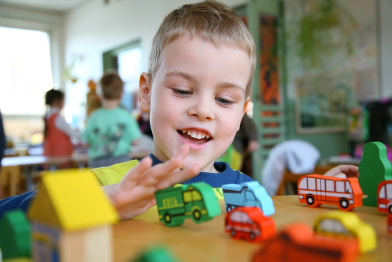
© Pavel Losevsky/3780286/Fotolia
Young children are not good judges of danger, and they require constant and careful supervision. Selecting safe materials, toys, and experiences is important.
How to Buy Toys
Good toys help children develop coordination and learn essential physical, intellectual, and social skills. Just as important, toys provide many hours of enjoyment. But almost everyone has seen children ignore an expensive toy to gleefully play with the wrapping paper. Finding the right toy is a challenge.
Toys should be chosen that are appropriate for the child’s stage of development. A toy should challenge a child’s skills, engage interests, and stimulate imagination.
Inspect all toys carefully before buying them. Avoid toys with sharp edges or points, that can be swallowed, or that have small parts that can potentially break off. Also avoid toys that are excessively noisy, that pinch or trap fingers, or that have cords or strings long enough to wrap around a child’s neck.
Consider the play value of the toy. A toy that gets played with every day is a better choice than a cheap toy that gets broken or discarded after a few uses. Good toys are able to withstand wear and tear—they are well constructed and made from sturdy materials.
A Guide to Choosing Suitable Toys
Toys are recommended for the age level where they are most appropriately introduced. Many toys are also suitable for later stages of development when they can be used in more complex ways. Remember, too, that toys are frequently available in a variety of formats. Examples are large fabric blocks, wood or plastic alphabet blocks, and interlocking puzzle blocks. Choose the format most appropriate for the child’s abilities.
As you review the following chart, can you recall the toys you enjoyed playing with as a child? Do you remember how you liked to play with these toys?
|
Age |
What Children Are Learning |
Characteristics of Suitable Toys |
Recommended Toys |
|
0–6 Months
© Adrov Andriy/shutterstock |
|
|
|
|
6–12 Months
© HomeStudio/shutterstock |
|
|
|
|
12–18 Months
BananaStock/Thinkstock |
|
|
|
|
18–36 Months
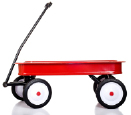
© Mike Flippo/shutterstock |
|
|
|
|
3–6 Years

© waya/shutterstock
|
|
|
|
Role of the Caregiver in Supervising Children
Caregivers should follow these policies:
- Caregivers should always be located at different points in the indoor and outdoor settings so all the children can be seen at one time. When a staff member is engaged with one child or a small group, he or she needs to continue to maintain an awareness of the whole group.
- Caregivers adjust their supervision to the needs of children of different ages.
- Caregivers take additional precautions in potentially dangerous activities (like cooking, field trips, or new or unfamiliar situations).
- Caregivers always focus on the children.
- Caregivers supervise children when they are asleep.
- Caregivers make sure that toys are safe and appropriate.
Supervisors in a child care centre should ensure that
- children can be seen and heard by supervisors at all times
- age-appropriate equipment and toys are available
- enough play materials are available to ensure choices
- all toys and equipment are in good condition and are not rusted or broken
- toys and equipment are safe (children can trip over dress-up clothing that is too long; small objects can be swallowed)
- all activities are age appropriate
- the playroom is not too cluttered
- children are not lined up to wait for toileting
- children are not left on changing tables without staff beside them and safety harnesses used
- changing tables are far away from food
- health practices are always maintained (diaper pail closed, hands washed)
- medications are locked up
- all food is nutritious
- all doors for equipment and cleaning materials are locked
- gates are closed
- the playground is free of hazardous materials
- plants are not poisonous
- children are supervised on the climber and slide
- proper clothing and footwear is worn (avoid drawstrings around neck area)
- no helmets are worn on the climbing equipment
- the cushioned surface is deep enough and fall zones wide enough
1.8. Learning Activity 3
Session 2: Health, Safety, and Well-Being of Children
Learning Activity 3: Supervising Children
Focus
Prevention is the best strategy! Being able to assess the possible dangers and make changes to make the child care centre safer is an important part of the caregiver’s role.
In Learning Activity 3: Supervising Children there are two illustrations of caregivers with children. One illustration is indoors, while the other is outdoors. The caregivers are not adequately supervising the children. List at least five things in each picture that indicate that supervision is not adequate.
 Checking In
Checking In
Save your completed learning activity in your course folder.
1.9. Session 2 Summary
Session 2: Health, Safety, and Well-Being of Children
Session Summary
Important: The quiz may contain questions beyond points highlighted in this summary. Be sure to review the session thoroughly.
Review Session 2 to prepare for writing the quiz. As you review, note the sections that connect with the following points:
- To operate, a child care centre must have a licence. The licence indicates that a licensing officer has visited the centre and determined that the centre meets at least the minimum standards as defined by the Child Care Licensing Regulation.
- The Child Care Licensing Regulation lists the minimum standards of practice that the child care centre must meet by law. These standards deal with many aspects of child care operation, including the ratio of staff to children, record keeping, safety precautions, and required play spaces. The purpose of the regulation is to protect children’s health and safety and to ensure that their developmental needs are met.
- Licensing officers are employees of regional Child and Family Services Authorities. Their role is important for monitoring the quality of care children receive in Alberta.
- In addition to meeting the standards of the Child Care Licensing Regulation, centres must also comply with the requirements established by the Alberta Fire Code and the Public Health Act. Health and fire inspectors assess each centre’s compliance to these standards.
- Your familiarity with the Child Care Licensing Regulation, as well as other Early Childhood Education resources, will help ensure that the care you provide meets at least the minimum standards required for ensuring children’s health, safety, and general well-being.
Session Quiz
Contact your teacher to decide together when and where you will complete the Session 2 Quiz.
 Checking In
Checking In
It is now time to fill in your Course Completion Checklist if you haven’t already. This checklist can be found in the Toolkit and is used to keep track of your progress. Print or save a copy in your course folder, and ensure it is updated regularly. If you have any concerns, communicate with your teacher about them.


